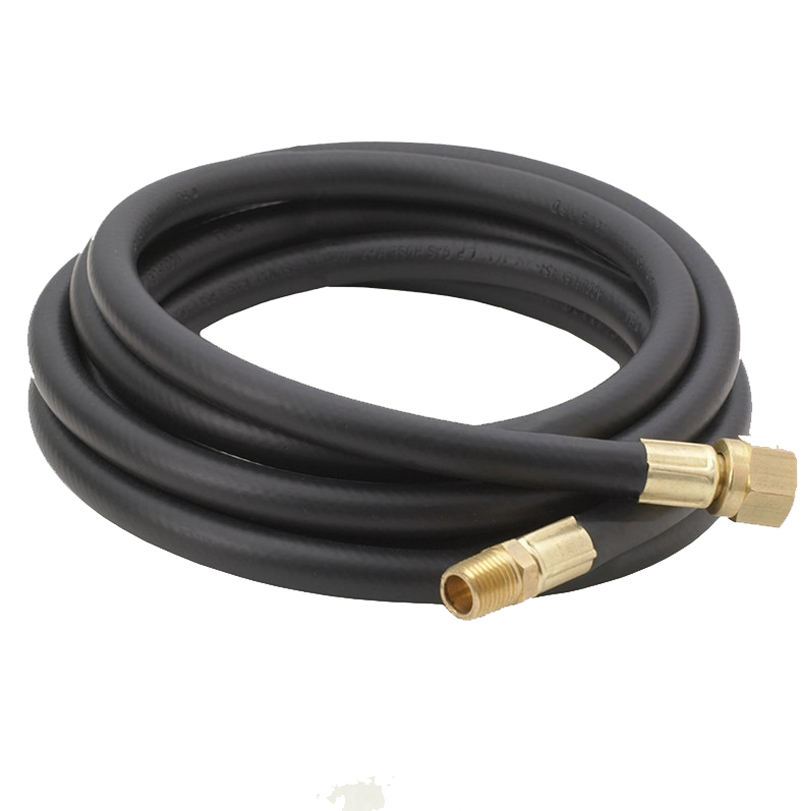335345435
Sep . 23, 2024 05:56 Back to list
hydraulic hose crimp fittings
Understanding Hydraulic Hose Crimp Fittings
Hydraulic systems are integral to many industries, providing the power necessary for machinery to operate effectively. Among the various components that make up these systems, hydraulic hose crimp fittings play a critical role in ensuring efficient and safe operation. This article explores the significance of hydraulic hose crimp fittings, their types, applications, and installation considerations.
What Are Hydraulic Hose Crimp Fittings?
Hydraulic hose crimp fittings are connections that join hydraulic hoses to other components, such as pumps, valves, and cylinders. They are designed to create a secure, leak-proof seal that can withstand high pressures. The crimping process involves using a specialized machine to compress the fitting onto the hose, ensuring a tight bond that keeps the system functional.
Types of Crimp Fittings
Hydraulic hose crimp fittings come in various designs and materials, tailored to specific applications. Common types include
1. Steel Fittings These are the most widely used due to their strength and durability. Typically, they are designed to handle high-pressure environments and are resistant to wear and tear.
2. Stainless Steel Fittings For environments that require corrosion resistance, stainless steel fittings are ideal. They are commonly used in industries like food processing and marine applications.
3. Aluminum Fittings Lightweight and resistant to corrosion, aluminum fittings are preferred in applications where weight is a concern.
4. Brass Fittings Brass is often used for low-pressure applications. It can resist corrosion and provides good durability.
hydraulic hose crimp fittings

Applications of Hydraulic Hose Crimp Fittings
Hydraulic hose crimp fittings are essential components across various sectors. They are widely used in
- Construction Equipment Crimp fittings secure connections in excavators, bulldozers, and cranes, facilitating heavy lifting and moving of materials. - Agricultural Machinery Tractors and harvesters rely on these fittings for hydraulic systems that operate attachments and tools. - Manufacturing In factories, hydraulic systems powered by crimp fittings help in automation processes and machinery operation. - Transportation Trucks and vehicles that utilize hydraulic brakes and steering mechanisms depend on reliable crimped connections.
Installation Considerations
Proper installation of hydraulic hose crimp fittings is crucial for ensuring system efficiency and safety. Here are some key points to consider
1. Compatibility Always choose fittings that match the specifications of the hose and the intended application. Failure to do so may lead to leaks or system failure.
2. Correct Crimping Technique Use the appropriate crimping machine set to the manufacturer’s specifications. Inaccurate crimping can compromise the integrity of the fitting.
3. Regular Maintenance Inspect crimp fittings regularly for signs of wear or damage. Early detection of issues can prevent costly downtime and accidents.
In conclusion, hydraulic hose crimp fittings are vital components that enhance the performance and reliability of hydraulic systems across various industries. By understanding their importance and adhering to proper installation practices, businesses can maintain efficient and safe operations, maximizing productivity and minimizing risks.
-
SAE 100 R17 Black Smooth Cover Hydraulic Hose
NewsMar.07,2025
-
SAE 100 R17 Black Smooth Cover Hydraulic Hose
NewsMar.07,2025
-
SAE 100 R17 Black Smooth Cover Hydraulic Hose
NewsMar.07,2025
-
SAE 100 R17 Black Smooth Cover Hydraulic Hose
NewsMar.07,2025
-
SAE 100 R17 Black Smooth Cover Hydraulic Hose
NewsMar.07,2025
-
steel wire braided hydraulic hose
NewsMar.07,2025



